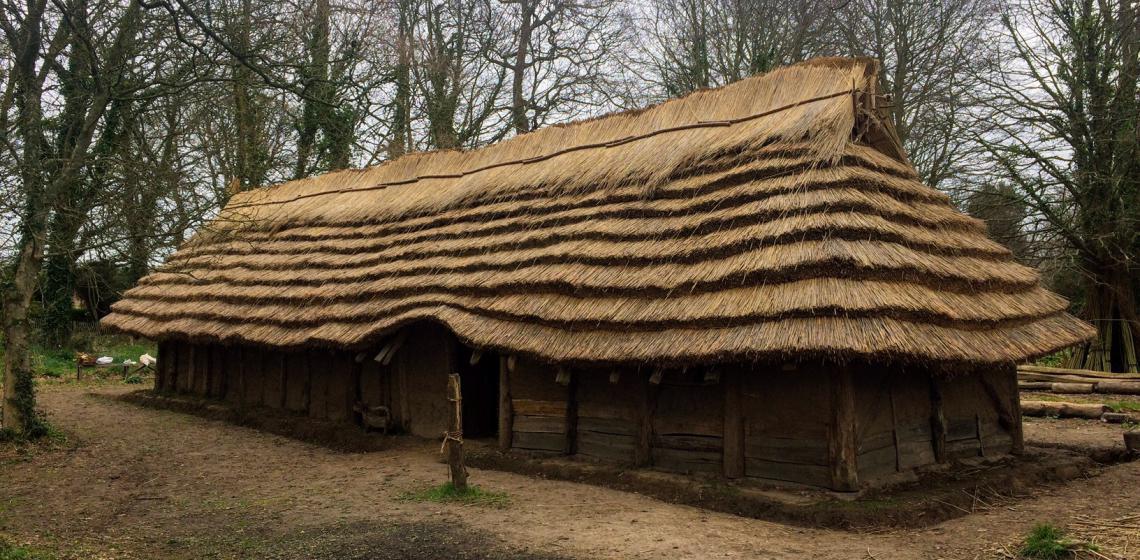
With a name that’s derived from the Old Norse of the Vikings – haugr meaning a mound and byr - that’s bound up with a medieval legend of a dragon and a knight, it’s no surprise that La Hougue Bie is a magical and surprising place creating a truly memorable experience, home to one of the ten oldest buildings in the world.
The Legend
According to a folk tale, the mound of La Hougue Bie takes its name from the Lordship of Hambye in nearby Normandy. While the legend tells the story of a dragon and the knight who killed it, others interpret it as a tale of the Christianisation of the old pagan site, with the dragon representing the old beliefs and the knight the new religion of Christianity.
La Hougue Bie through the ages
Around this compact and tranquil site you will discover traces of life in Jersey over six millennia, from one of Europe’s finest Neolithic passage graves to a concrete bunker from the German Occupation of 1940 to 1945.
The La Hougue Bie passage grave was constructed by some of Jersey’s earliest inhabitants, as both a tomb and a place for the living to engage in rituals and ceremonies. Unlike many other dolmens, you can stand inside its chamber and feel the atmosphere of this profoundly sacred space. The tomb is so aligned that the interior is illuminated by the rising sun on the spring and autumn equinox.
Once completed, the passage and chamber was secreted beneath a mound of stones and earth. When it fell into disuse around 5,000 years ago, it was blocked up with debris and forgotten until the medieval era when a Christian chapel was constructed on top of the prehistoric mound.
When Jersey embraced the Protestant Reformation in the 16th century, the chapel fell into secular hands. In 1792, during the Napoleonic Wars, its owner Philippe D’Auverge converted it into a Gothic folly and signalling station known as The Prince’s Tower. After his death, La Hougue Bie was opened as a public attraction and soon became popular as a venue for eating, drinking and dancing.
By the late 19th century the Tower had become derelict and sadly was demolished in 1924, so that the mound could be excavated. The following year the site was opened as a museum until the German Occupation began in 1940. A command bunker is a permanent reminder of that period, which has been repurposed to tell the story of the plight of the thousands of forced workers brought to Jersey by the Organisation Todt.
The Archaeology Museum - Flint tools made be the first Islanders, dating back a quarter of a million years, Bronze Age axe heads and Celtic coin hoards trace the evolution of our Island community.
The Neolithic Longhouse - Built entirely by volunteers, a 20-metre-long replica Neolithic Longhouse has been constructed at La Hougue Bie. The team used only traditional tools and authentic Neolithic techniques, including mud daubing, thatching, bark-stripping and making cordage from stinging nettles and brambles. In 2019, the building won the prestigious Discover Heritage Award given by the Association for Heritage Interpretation (AHI). The AHI awards take place every two years and recognise outstanding cultural and natural heritage interpretation in Britain and Ireland.
Text: La Hougue Bie website
